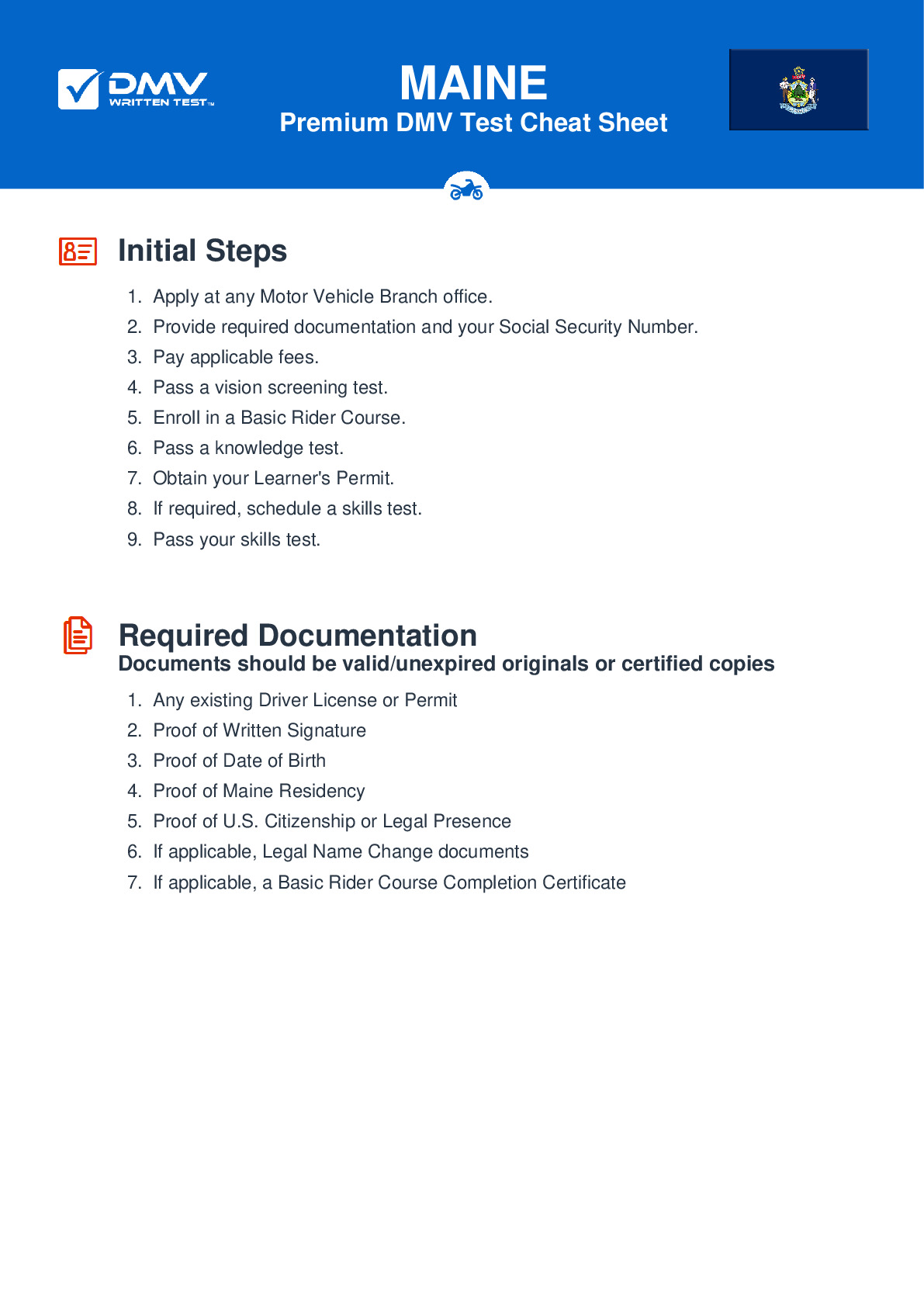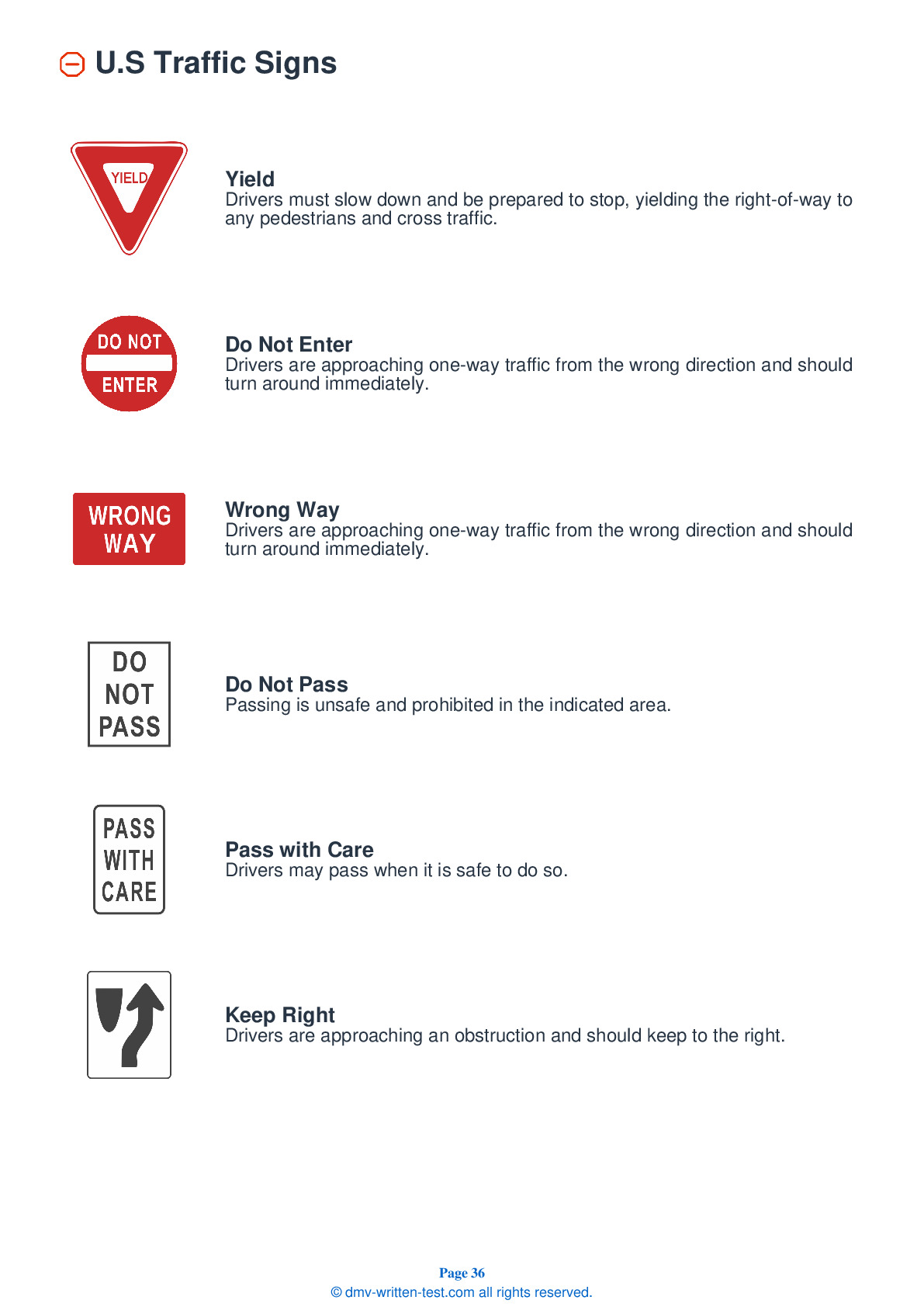2025 Maine Motorcycle Permit Test 16
The following questions are from real DMV written motorcycle permit tests. These are some of the actual permit questions you will face in Maine when getting your motorcycle learners permit. Each motorcycle theory practice test question has three answer choices. Select one answer for each question and select "grade this section." You can find this button at the bottom of the drivers license quiz. For a complete list of questions and answers for Maine please visit https://cheat-sheets.dmv-written-test.com/en/maine/motorcycle.
Number of Tests
Number of Question
Passing Score
8. Motorcycles:
Explanation
Motorcycles have blind spots, just like any other vehicle. Always turn your head to check your blind spot before changing lanes. Head checks should be a regular part of your scanning routine.
9. If you are passing a row of cars parked to your right, you should not ride in the right portion of your lane for all of the following reasons, except:
Explanation
It is usually best to stay in the left portion of your lane when passing a row of parked cars. This position will keep you away from vehicles pulling out unexpectedly, doors being opened, and people exiting or stepping out from between cars.
10. The best lane position:
Explanation
There is no single lane position that is always best and no single lane position that should always be avoided. You should vary your lane position in response to changes in riding conditions.
11. Of the following, which should you not do to improve your safety when riding at night?
Explanation
To ride safely at night, you should reduce your speed, use your high beam headlight when you are not riding near other vehicles, and increase your following distance. Take advantage of vehicles ahead of you to provide clues about the upcoming road. Their headlights may help to illuminate the road ahead and their taillights will bounce up and down if the vehicle is being driven over bumps on the road.
12. To reduce your reaction time, you should:
Explanation
When approaching a potentially dangerous area, such as an intersection, you should cover the clutch lever and both brakes in order to reduce the amount of time you will need to react to any hazards.
13. Which of the following is not an example of a slippery surface?
Explanation
A number of surfaces can provide poor traction for tires. Wet pavement; roads covered in loose gravel or sand; muddy, snowy, or icy areas; painted lane markings; and metal covers and plates in the road can be more hazardous for a motorcyclist than dry pavement.
14. Your lane position should do all of the following, except:
Explanation




